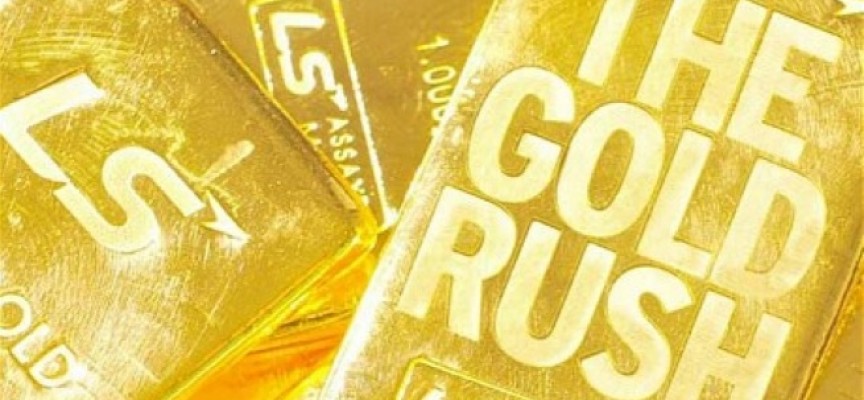Here is a look at the New Gold Rush with the price of gold hitting $3,000 and the rush to move bullion.
March 19 (King World News) – Gerald Celente: TRENDS JOURNAL NOTE: The Trends Journal was the only magazine in the world to forecast that 2024 would be a Golden Year for Gold. Since we made that forecast on 2 January 2024, gold prices have risen nearly $1,000 per ounce.
As we say, no one can predict the future; there are too many Wild Cards, and now, along with the Trump Card (two of our Top Trends for 2025) that are now being dealt.
When Donald Trump won the race to the White House last November, gold prices slumped. There was belief on The Street that the dollar would get stronger as would the equity markets. But since that time a number of Wild Cards that Trump dealt have changed that perception. His tariff policies and support for the ramping up of the Israel War have put a new shine on gold and the dollar has significantly weakened. Indeed, today the euro hit $1.0954, its highest value since October 10.
Of course, nothing goes straight up or straight down, thus there will be a correction. However, considering what in the world is going on and where it is heading, we remain bullish on gold. How high it can fly is a guessing game at this point. Why? Because no one knows how many Wild Cards there are in the deck and how the Trump Card will be played.
GOLD TOPS $3,000 FOR FIRST TIME AS INVESTORS SEEK SAFETY
The U.S. spot gold price briefly topped $3,000 on 10 March, passing the milestone for the first time. The metal’s futures price in European evening trading surpassed the same milestone later on the same day.
Gold’s previous record price of $2,974 was set in late February.
Investors are fleeing equity markets for safe stores of value amid fears that Donald Trump’s tariff wars will tank stock prices, the World Gold Council said. Also, bond prices are expected to slump as the U.S. treasury issues more securities to cover the country’s growing public debt.
“Historically, gold fares very well on a relative basis during market calamities, given its safe-haven status and liquidity,” John Ciampaglia, CEO of Sprott Asset Management, said to The Wall Street Journal. “Until we get some clarity on tariffs, trade policies, and geopolitical relationships, gold should continue to benefit.
“With the heightened market volatility we’re seeing, the case to own some gold remains compelling,” he added.
Interest-rate speculators are wagering on a 70-percent chance the U.S. Federal Reserve will cut interest rates at least once this year. If the central bank does cut rates, gold will benefit because lower interest rates reduce interest income, making bullion’s upside more attractive.
Russia’s war in Ukraine also keeps geopolitical tensions alive, making gold more interesting as insurance against loss of value among assets exposed to geopolitical strife.
Central banks began buying gold after the U.S. used the dollar and international financial mechanisms as a way to punish Russia for attacking Ukraine. Even when the shooting stops in Europe, banks and investors are likely to hang onto gold as a hedge against similar international upsets in the future, the WSJ noted.
National banks also will continue to hold more than their usual amounts of gold as a hedge against efforts of Asian and developing nations to establish their own trade blocs that bypass the dollar as a reference currency.
Central banks’ gold purchases have surged since the war in Europe began, exceeding 1,000 metric tons a year, according to the World Gold Council.
“As global fragmentation continues, central bank buying will remain a strong pillar of demand and shape the market’s long-term dynamics,” John Reade, the council’s chief strategist, said to the WSJ.
THE NEW GOLD RUSH: MOVING BULLION TO NEW YORK
Donald Trump has threatened to stick all imports from Europe coming to the U.S. with a 20-percent tariff. He has not said gold bullion, usually exempt from import duties, is included. However, gold bugs are taking no chances.
The Swiss Argor-Heraeus refinery that melts gold into one-kilogram gold bars (about 2.2 pounds) has been running 24 hours a day since December to fill orders. The bars are then rushed to a New York repository to beat any sudden whim of Trump’s to put a tariff on them.
Since December, more than $61 billion in bullion has flooded into the U.S., causing shortages in London, the world’s center of gold trading and storage. Much of the world’s gold is kept with the Bank of England (BoE), including that belonging to several central banks. Only 6 percent of the gold stored with the BoE belongs to the bank itself.
“Typically, a period of peak demand would last one or two weeks,” refinery co-CEO Robin Kolvenbach told the Financial Times. “Peak demand like what we have at the moment, which has lasted more than three months, is quite unusual.”
The slight chance that Trump would tax bullion sent U.S. gold prices skyward, created a price differential between the U.S. and London and gave gold investors an additional motive to bring their gold to American repositories.
“The nature of physical gold is something that is underestimated, particularly by a bunch of financial people who trade it on their Bloombergs all day,” John Reade, chief strategist at the World Gold Council (WGC), said to the FT. “Gold has financial characteristics but it’s also a physical asset.”
The current gold rush began in December with a dinner hosted by the London Bullion Market Association. The topic: growing demand for gold bars in the U.S.
After that, investors scrambled to move their gold across the Atlantic. Demand to get bars out of the Bank of England’s repository came so fast that it created a month-long delay, causing a liquidity crisis in physical gold on London’s market.
“Gold is a physical asset, so there are logistical constraints and security constraints” around its movement, David Ramsden, the BoE’s deputy governor, told a February press briefing.
The bars are loaded from BoE vaults into armored trucks, whisked to Heathrow airport, loaded into cargo holds of passenger jets, and moved to Zurich. Insurance rules limit each plane to carrying no more than five metric tons of the metal.
Once in Switzerland, the gold is recast into one-kilogram bars and reloaded onto planes, this time bound for the U.S.
The entire journey from England’s bank vaults to recasting to the U.S. adds $3 to $5 per ounce to gold’s price, the WGC said.
Because Trump has still not mentioned a tariff on gold, the rush to bring bars into the U.S. has begun to cool. If it becomes clear that he will not tax gold imports, the bars likely will return to England, where storage costs are cheaper, the FT noted.
JUST RELEASED: $3,000 Gold!
To listen to Alasdair Macleod discuss the gold price breaking above $3,000 and much more CLICK HERE OR ON THE IMAGE BELOW.
© 2025 by King World News®. All Rights Reserved. This material may not be published, broadcast, rewritten, or redistributed. However, linking directly to the articles is permitted and encouraged.








